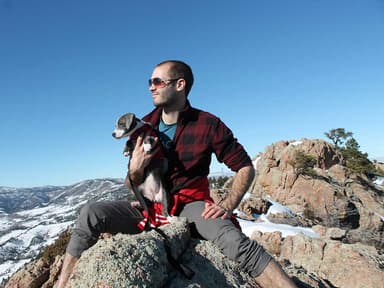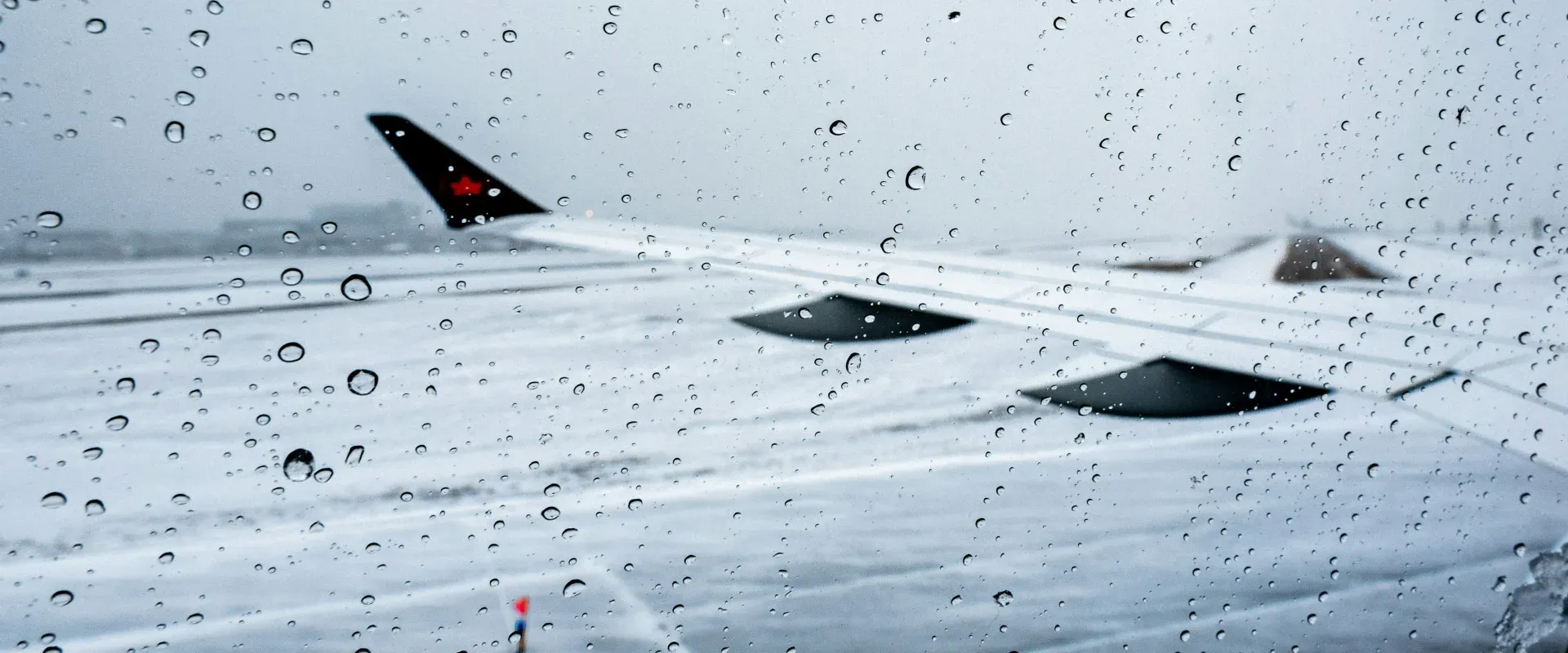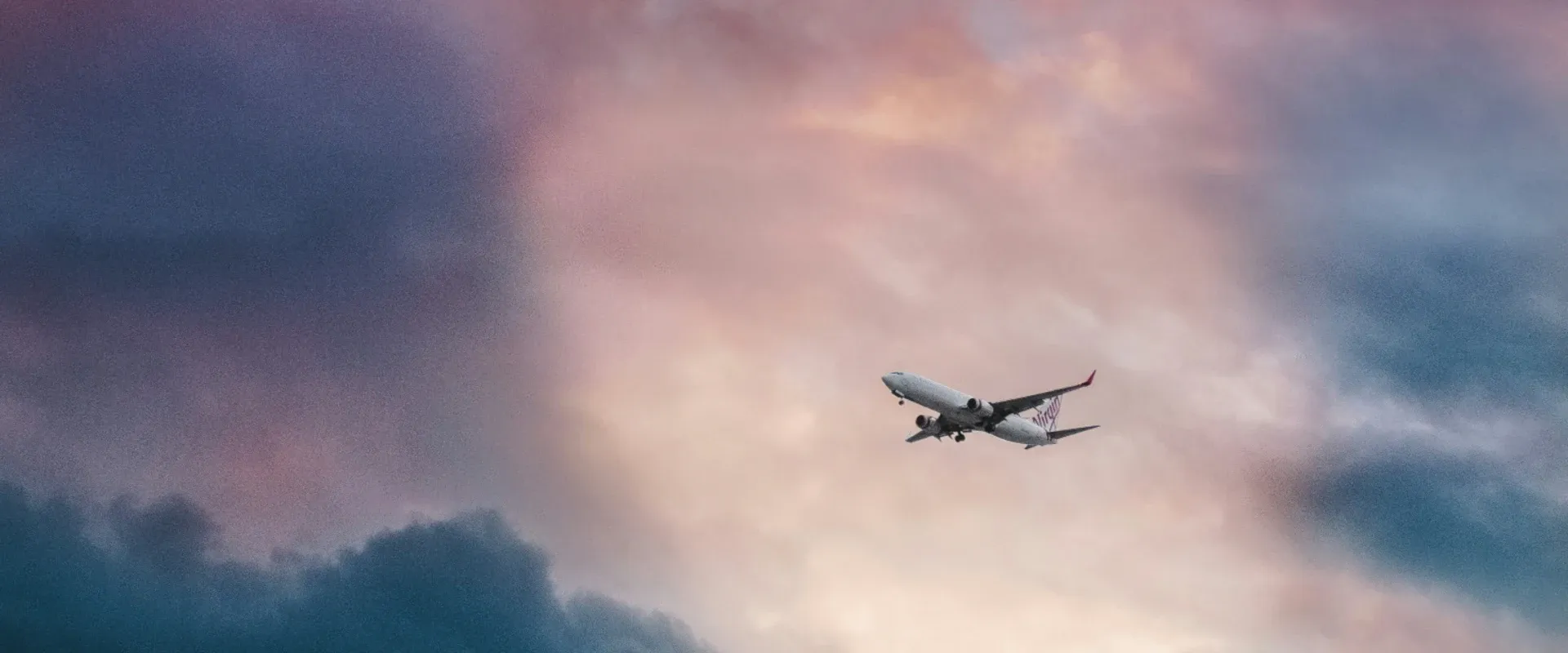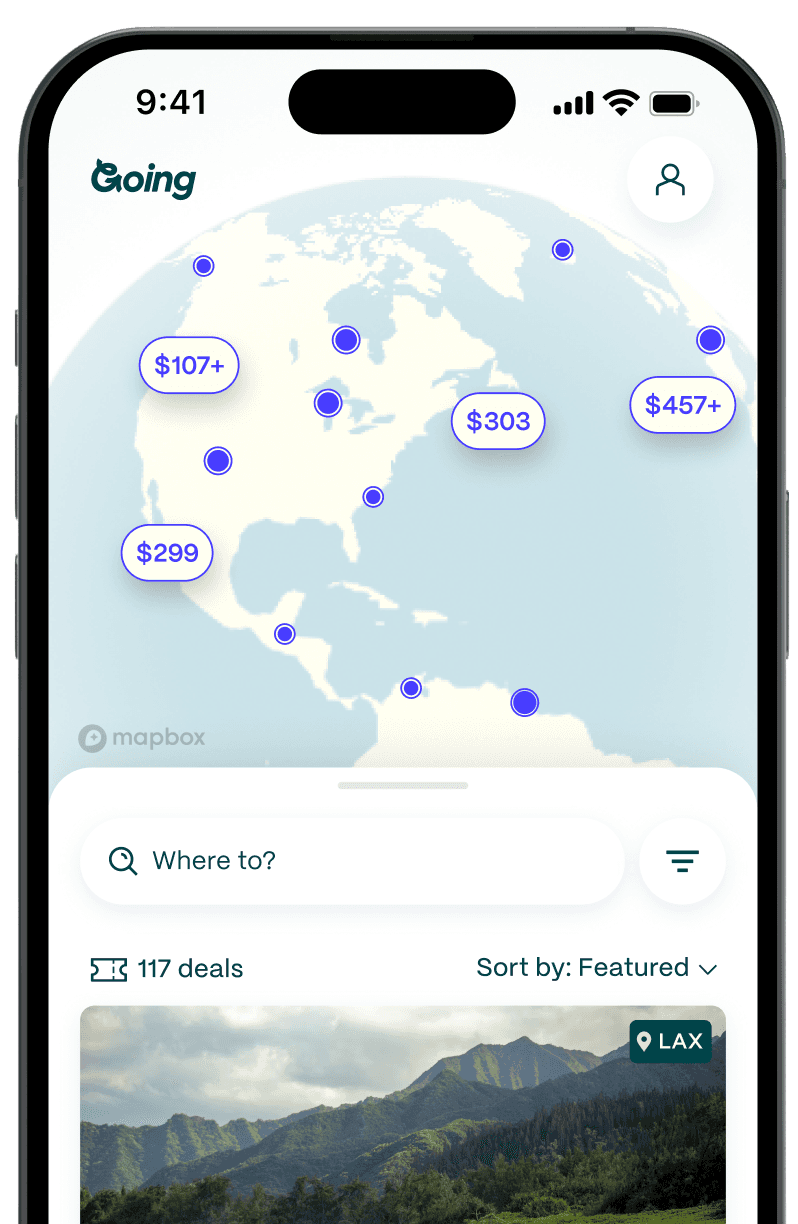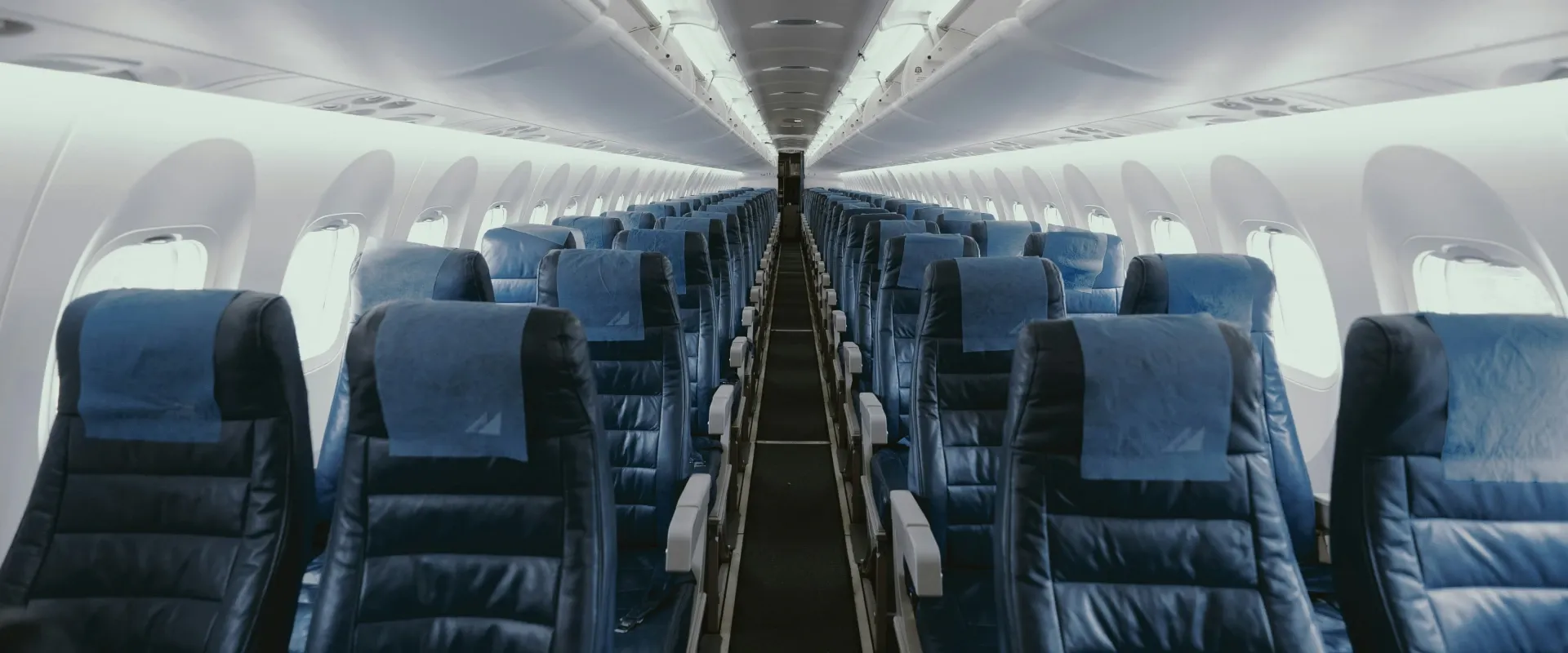
The Best Seats on a Plane: Tips to Find and Book Them
Table of Contents
Going has partnered with CardRatings for our coverage of credit card products. Going and CardRatings may receive a commission from card issuers. Opinions, reviews, analyses, and recommendations are the author's alone, and have not been reviewed, endorsed, or approved by any of these entities. Some of all of the card offers that appear on this page are from advertisers; compensation may affect how and where the cards appear on the site; and Going does not include all card companies are all available card offers.
Finding cheap flights can sometimes mean getting stuck with a terrible seat. From tickets with no storage under the seats in front to options without reclining seats, there are a lot of potential annoyances that can happen if you’re not savvy about where you sit on a plane. Still, there’s no one-size-fits-all answer when it comes to the best airplane seat.
The best seats on a plane depend entirely on your needs, as well as the specific aircraft you’re flying. For instance, a person who sleeps the entire flight may be completely thrown off by an aisle seat with seatmates waking them up often to use the lavatory, while someone who loves to get up and stretch may feel trapped by a window seat. If you're wondering what are the best seats on a plane for comfort, consider choosing seats in the middle of the cabin where you’re less likely to experience turbulence.
This guide breaks down everything you need to know before your next flight, including tips on booking strategies, airline-specific perks, and avoiding the best and worst seats on a plane so you can be sure you make the right seat choice for you.

What makes the best seat on a plane
Seat location
Window vs. aisle
The window seat is ideal for those who want to enjoy the view and be somewhat isolated: You have a surface to lean on when sleeping and avoid the issue of someone climbing over you to go to the toilet.
However, if you are the kind of passenger who gets up frequently or likes a quick escape to the aisle, then the aisle seat would be a much better choice. Besides, aisle seats offer more legroom to stretch out (especially useful on long-haul flights) but you have more chance of getting bumped into by passengers and crew.

Front vs. back
Where you sit on a plane can make all the difference, and seats closer to the front are usually preferred. Not only can you deplane faster, but they are also quieter and experience less turbulence compared to the rear. On the other hand, the back seats tend to be noisier but also closer to the galley and restrooms, which might be quite convenient. Choosing a seat by the wings of the plane can be a good middle ground between accessibility and comfort.
Middle seats
Middle seats are usually the least popular on flights because they neither have a window view nor easy aisle access. But if you travel as a couple or family, sitting together as a group in the middle seats may be a good strategy. Another plus of this section is that on 2-3-2 seat configurations, the middle seat in the center section might offer slightly more space.
Exit row seats
Most exit-row seats have plenty of legroom, which is why they are often popular with tall passengers. However, these spots come with trade-offs. For starters, it is expected that passengers seated in exit rows must assist in case of emergencies and, in some cases, their seats do not recline. Most airlines also charge more for these seats, so it’s key to consider whether the comfort is worth it.
Type of plane
Aircraft layout and seating options vary between airlines and models, so remember to look up your model before choosing your seat. Larger planes like Boeing 777s or Airbus A350s often have more premium seating options with additional space.
Class of service
It’s no secret that your flight experience will depend greatly on whether you fly economy, premium economy, business, or first class. Economy class offers the most affordable options but can be cramped, while premium economy provides extra legroom and recline. Fully reclining seats in business and first class offer a luxurious travel experience with enhanced dining and entertainment options.
Some airlines, such as Delta and United, offer extra-legroom economy seats like Delta Comfort+ and United Economy Plus for an additional fee. Of course, premium economy is a step above, with wider seats, extra legroom, better meal service, and sometimes priority boarding.
These days, there are many business and first-class experiences that stand out for those looking for a luxurious flight. For example, Delta One features lie-flat seats, privacy doors, and elevated dining. Qatar Airways’ Qsuite also provides an industry-leading business-class experience with fully enclosed suites and adjustable seating arrangements. For more details on premium airline experiences, check out our expert reviews:
- Emirates Premium Economy Review
- Delta One vs. First Class
- Qatar Airways First Class Review
- American Airlines First Class Review
Airline-specific amenities and features
Another factor that will influence the quality of your seat is the different airline-specific seat features like extra-wide seats or additional legroom. Some airlines even have preferred seating for frequent flyers and premium economy passengers.
Many airlines also allow travelers to select preferred seats, such as bulkhead or extra-legroom options, for an additional fee. Along the same line, emergency exit row seats are a popular choice for those seeking extra space for an extra fee, but they come with restrictions.
Flights don’t have to break the bank! Discover insider tips and strategies on how to get cheap flights and book at the lowest prices.

What are the best seats on a plane for your travel style
Best window seats on a plane
If you want to spot the iconic sites, look at the clouds, or simply want a surface to lean on for a nap, the window seat is your best bet. For the smoothest ride and best views, opt for a window seat in the front half of the plane.
The wing area tends to have the steadiest air, making it a great choice for those who dislike turbulence, but it can make sightseeing a bit hard. Some aircraft have window seats with extra space due to missing windows or bulkhead positioning, so checking seat maps in advance can help you find the best option.
Best seats on a plane with a baby
Parents flying with a baby should aim for bulkhead seats. These have additional space and often come with an optional bassinet attachment. Many airlines, such as British Airways and Emirates, allow travelers to reserve bassinets on long-haul flights in advance. Avoid seats near the galley, where crew movement and noise could disrupt your baby's sleep.
Best seats on a plane for view
If you're flying over scenic landscapes, your seat choice can make all the difference. Researching the flight path can help determine the best side of the plane to sit on for takeoff and landing views.
For example, flights into Los Angeles often offer stunning views of the city when seated on the left side of the aircraft. Window seats with an unobstructed view (avoiding wing positions) are ideal for photography lovers.
Best seats on a plane to avoid turbulence
A bumpy ride can range from uncomfortable to downright unsettling, and different parts of the plane feel turbulence more intensely than others. “The smoothest place to sit is over the wings,” says commercial pilot Patrick Smith, host of AskThePilot.com. These seats are close to the plane’s center of lift and gravity. “The roughest spot is usually the far aft. In the rearmost rows, closest to the tail, the knocking and swaying is more pronounced.”
The best seats on a plane for disabled people
Airlines typically offer priority seating for passengers with disabilities, often near the front of the cabin or close to the aisle for easy boarding. Delta, United, and American Airlines provide specific accessibility options, including aisle seats with movable armrests and extra assistance during boarding. Calling the airline in advance ensures that the right accommodations are made.
The quietest seats on a plane
Noise is bound to happen, from the sound of the seatbelt alert and other announcements to fussy babies and conversations among passengers. If you’re one of those lucky people who can fall asleep on a plane, reducing the amount of noise is key. Some of it you simply can’t avoid, but certain seats are generally more peaceful than others.
Seats near the galleys and lavatories are usually the noisiest, and seats closer to the front of the plane are slightly quieter. The noise also depends on where the engines are located (on multi-engine planes, this is under the wings).
Window seats are great if you like to lean to one side while sleeping and don’t want the sound of the drink cart and any in-aisle chatter. Also, you avoid your neighbors from disturbing your slumber as they get up to stretch or use the lavatory.
The best seats to have an empty seat next to you
Having an empty seat next to you can make your flight experience more comfortable. You can take over both armrests, stretch your legs out without being rude, and have one less person to bother or accommodate when it comes to getting up and moving around.
Your best chance of an empty seat next to you is toward the back since most passengers choose seats in the front of the plane in an aisle or window seat, not a middle one. The last seats to be chosen are the middle seats in the back of the plane. In a widebody aircraft with two aisles, sit in the center sections of seats as opposed to the seats in the side sections. You could also pay the fee for an extra-legroom seat. Because they’re more expensive, you’re less likely to have a seatmate.
If you’re traveling as a couple, book both the aisle and the window seats. A single passenger is far less likely to swoop up that middle seat. And if someone does take the middle seat, it won’t be hard to convince them to swap with one of you and take the window or aisle so you can sit next to each other.
The best seat for a tight connection
If you have a short layover, sitting near the front of the plane ensures you can exit quickly upon landing. Aisle seats are preferable, as they allow you to grab your bags and leave without waiting for others. Some airlines, like Delta, offer FastTrack services for connecting flights, helping you move through security more efficiently.
The best seat for a larger person
Larger passengers are likely to find the aisle seat to be the most comfortable. For starters, they have just one passenger seated next to them should the middle seat be taken. Secondly, on some planes, it’s possible to raise the aisle armrest to make more room.
Some airlines are better than others for ensuring bigger passengers receive enough space to sit comfortably. For instance, Air Canada permits larger passengers to request an extra seat free of charge for travel within Canada. Delta Air Lines prioritizes seating larger passengers next to empty seats when available. JetBlue offers all passengers its Even More Space seats with 38-inch pitch starting as low as $10 extra (depending on the route). And most airlines let a single passenger purchase two adjacent seats.
Best seats on a plane with pets
Traveling with a pet requires a seat with under-seat storage for a carrier. Aisle seats near bulkheads are a good option, as they provide easier access to the pet carrier without disturbing other passengers. Some airlines, such as Alaska Airlines and American Airlines, allow pets in the cabin on certain routes, so checking pet policies before booking is essential.
Sometimes the best deals happen by accident! Discover mistake fares and save big on airfare.
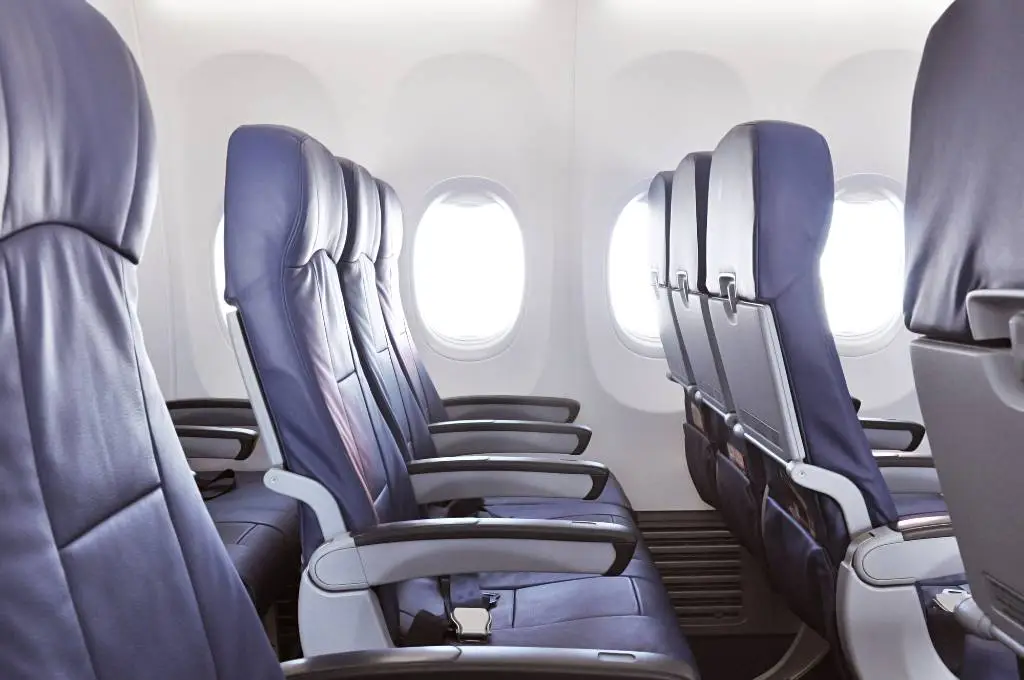
How to find and book the best seats on an airplane (tips & tricks)
Tools and apps
One of the easiest ways to find the best seats is by using third-party tools and apps. Websites like SeatGuru and ExpertFlyer offer detailed seat maps and passenger reviews, allowing you to check which seats have extra legroom, limited recline, or are near high-traffic areas like galleys and restrooms.
Many airline apps also allow you to view seating arrangements, but not all provide a detailed seat map before booking. If your airline doesn’t display seat maps, cross-reference your flight number online to ensure you’re selecting the best possible seat.
>> Flights don’t have to break the bank! Discover smart strategies on how to find the best flight deals and book at the lowest prices.
Airline-specific seat maps
While many airlines display seat maps during booking, not all provide full transparency about seat quality. Some airlines only reveal detailed seating options once you’ve completed your reservation, while others may charge extra to select a seat in advance. For instance, American Airlines and United allow travelers to choose their seats at the time of booking, but lower-tier economy tickets may restrict selection to check-in.
Frequent flyer programs
Many frequent flyer programs offer perks like early seat access, priority boarding, and complimentary upgrades. Delta’s SkyMiles Medallion and United’s MileagePlus elite programs for example allow their members to select preferred seats for free, even in economy. Better yet, higher-tier members can also receive automatic upgrades to premium economy or business class, depending on availability.
Even if you don’t fly frequently enough to earn elite status, many airlines allow you to use miles or points to upgrade your seat. If you're a member of a loyalty program but flying on a partner airline, you may still be eligible for certain benefits like priority seating.
Upgrade to main economy and book early
If you want a better seat without paying for business class, upgrading to main economy or premium economy can be a smart move. Many airlines, including JetBlue (Even More Space), Delta (Comfort+), and British Airways (World Traveller Plus), offer economy upgrades that provide more legroom, priority boarding, and better seat locations.
The best seats—especially those in exit rows, bulkheads, and near the front—are often taken within days of a flight opening for reservations. So, if you’re flying during peak travel seasons, remember to secure a seat as early as possible.
>> Wondering when to book? Get insights on the best time to book a cheap flight and maximize your savings.
Check in early
Even if you weren’t able to select a great seat at the time of booking, checking in early (typically 24 hours before departure) can give you another opportunity to move to a better seat. Some airlines release unsold premium economy and extra-legroom seats to regular economy passengers at check-in if a flight isn’t full.

Join Going to save while booking
Scoring a cheap ticket for the perfect seat can feel like a game of luck—but Going’s memberships are the travel cheat code you didn’t know you needed. Our flight experts hunt for cheap premium economy seats, business-class deals that sometimes cost less than economy, and absurd mistake fares as soon as they pop up.
Sign up for our travel membership trial to start receiving real-time discounted flight deals and exclusive discounts that make flying comfortably without blowing your budget easier than ever.
Download Going’s app and start receiving flight deals for free!
Frequently asked questions
Is it better to sit near the front or back of a plane?
Which class seat is best on a plane?
Is a window or aisle seat better?
Where is the best place to sit on a plane if you don't like flying?
Last updated November 18, 2025

